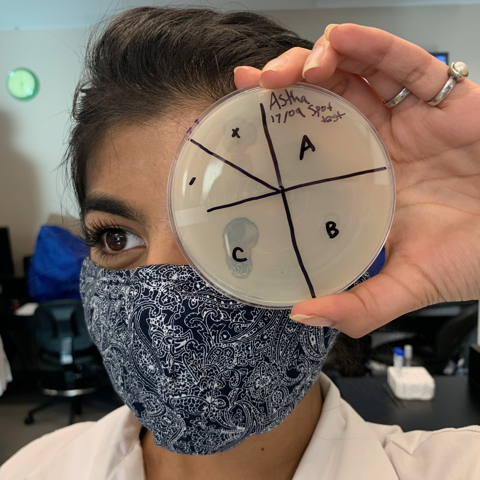Below is a summary of the abstract you submitted. Presenting author(s) is shown in bold.
If any changes need to be made, you can modify the abstract or change the authors.
You can also download a .docx version of this abstract.
If there are any problems, please email Dan at dar78@pitt.edu and he'll take care of them!
This abstract was last modified on March 16, 2021 at 11:12 p.m..

Not all viruses are problematic; bacteriophages are highly abundant bacteria-infecting viruses and they are often beneficial in eradicating bacterial infections. They have been investigated as a potential treatment for multidrug resistant bacterial diseases, such as MRSA, demonstrating that not all viruses are pathogenic. Berka is an Actinobacteriophage that infects Arthrobacter globoformis, and it was isolated from a soil sample collected from a puddle in Ottawa’s experimental farm. After steps of purification and amplification, Berka was classified as siphoviridae through transmission electron microscopy, and its genomic DNA was characterized using restriction digests and gel electrophoresis. Berka forms large round bulls-eye plaques on lawns of its bacterial host. Berka’s genome, the seventh smallest of all sequenced Actinobacteriophage genomes, is 15,178 base pairs long and consists of 65.2% GC content. Berka was initially classified as a singleton, but during the annotation process, we determined that it was more than 35% similar to phages Idaho, Corgi and Noely, allowing for its reclassification into the FE cluster. Other phages in this small cluster were found in the United States. Berka has 9 orphams, 8 of which have no known function. One orpham, gp7, encodes a novel tail spike protein. This is a unique adaptation to Berka that we hypothesize helps strengthen its adhesion to the cell wall to facilitate entry into host bacteria. Although the tail spike protein is present in nearly all Actinobacteriophage genomes, Berka is the first of the cluster FE phages to have an annotated tail spike gene. Since there are relatively few FE cluster bacteriophages, our research will help build on existing knowledge of bacteriophage protein functions, applications, and evolution.






